I am delighted to share our family recipe for Tomato Chutney. This condiment is a great way to make use of fresh, in-season produce. There is a perfect balance of sweet, tangy, slightly spicy flavours and I am certain that you will enjoy it as much as we do. With so many ways to serve it, it will be a great addition to your condiment repertoire.
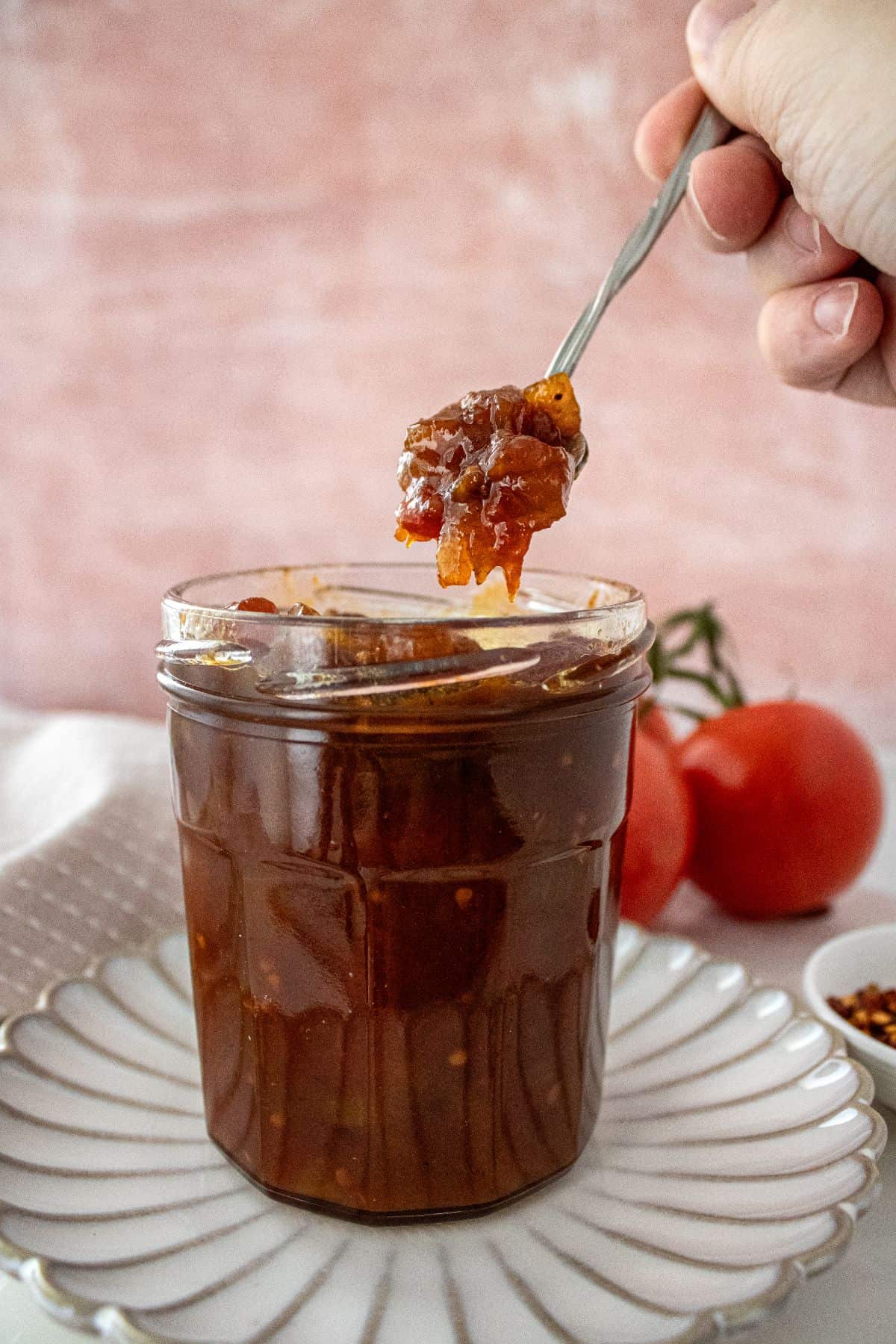
Why You'll Love This Recipe:
- It is a great way to use seasonal tomatoes. We often make it from tomatoes which are toward the end of their season, when they are abundant and at their most economical.
- When you make something yourself, you have total control over the quality of the ingredients. There will not be any artificial colours, flavours or preservatives, just pure, natural ingredients.
- Although you need to invest a little time, this is not a difficult recipe, and your time spent will reward you with jars of your own homemade produce to enjoy in the weeks ahead.
- Once you try making your own chutney, it is unlikely that you will ever again buy it from a store. Homemade is best!
- For this recipe, I have used tomatoes specifically sold for sauce making which makes the recipe more economical.
Recipe Inspiration: my mother spoke frequently and lovingly of her memories of my Nana's Tomato Chutney. She tells me that such was the popularity of this chutney that Nana made it in "industrial quantities" for their family of 7. As there was no recipe, I set about to create something that may come close and this is the result. Suffice to say, when my mother and my uncles tried my chutney, no words were spoken; just the sounds of extreme enjoyment and some heart strings being tugged as their fond memories were recalled. I was happy beyond words.
Ingredients and Substitutions:
Please see the recipe card further along in the post for exact quantities of ingredients and the full method.

- Tomatoes - you can use any variety of tomato; I look for large, ripe, juicy tomatoes. Small blemishes can be removed. Buy them at the height of the season when they are perfectly ripe, or toward the end of the season when they are often sold in bulk at a reduced price.
- Brown/yellow onions - onions are an essential flavour ingredient, adding savoury and sweet notes. You can use white or red onions if you prefer.
- Apples - we use Granny Smith; they are perfect for cooking and have both tart and sweet flavour notes.
- Vinegar - I use white vinegar with an acidity of 5%. It is essential for preservation as well as providing tanginess.
- Light brown sugar - adds sweetness and a caramel note.
- Sea salt - we use coarse kitchen salt; fine table salt is not suitable as it is stronger. The salt lifts the flavours in the chutney, as well as assisting with preservation.
- Ground black pepper - adds spice.
- Yellow mustard seeds - I have used yellow mustard seeds to add bright, tangy flavour.
- Dried chilli flakes - add a spicy note; add more if you want extra spicy chutney.
- Curry powder, turmeric, nutmeg, cloves and ginger - these ground spices add warmth as well as depth of flavour to the chutney. Ensure your spices are fresh, as they do lose their vibrancy as they age.
Variations:
Apples - you can use another variety of apple if you prefer.
Spice - the chutney is slightly spicy, but you could add cayenne pepper if you prefer more heat.
How To Make Tomato Chutney:
Please see the recipe card further along in the post for exact quantities of ingredients and the full method.

1 - Prepare your tomatoes:
Using a sharp knife, carefully score a cross into the bottom of each tomato. Add the tomatoes to a large pot of boiling water for 30-60 seconds, until the skin starts to peel. Remove and add to a bowl of ice water. Once they're cool enough to handle, peel the tomatoes and chop.
2 - Add your ingredients to a large pot:
To a large, non-reactive saucepan, add all of your prepared ingredients. Give the mixture a good stir and place on a medium-high heat to dissolve the sugar.
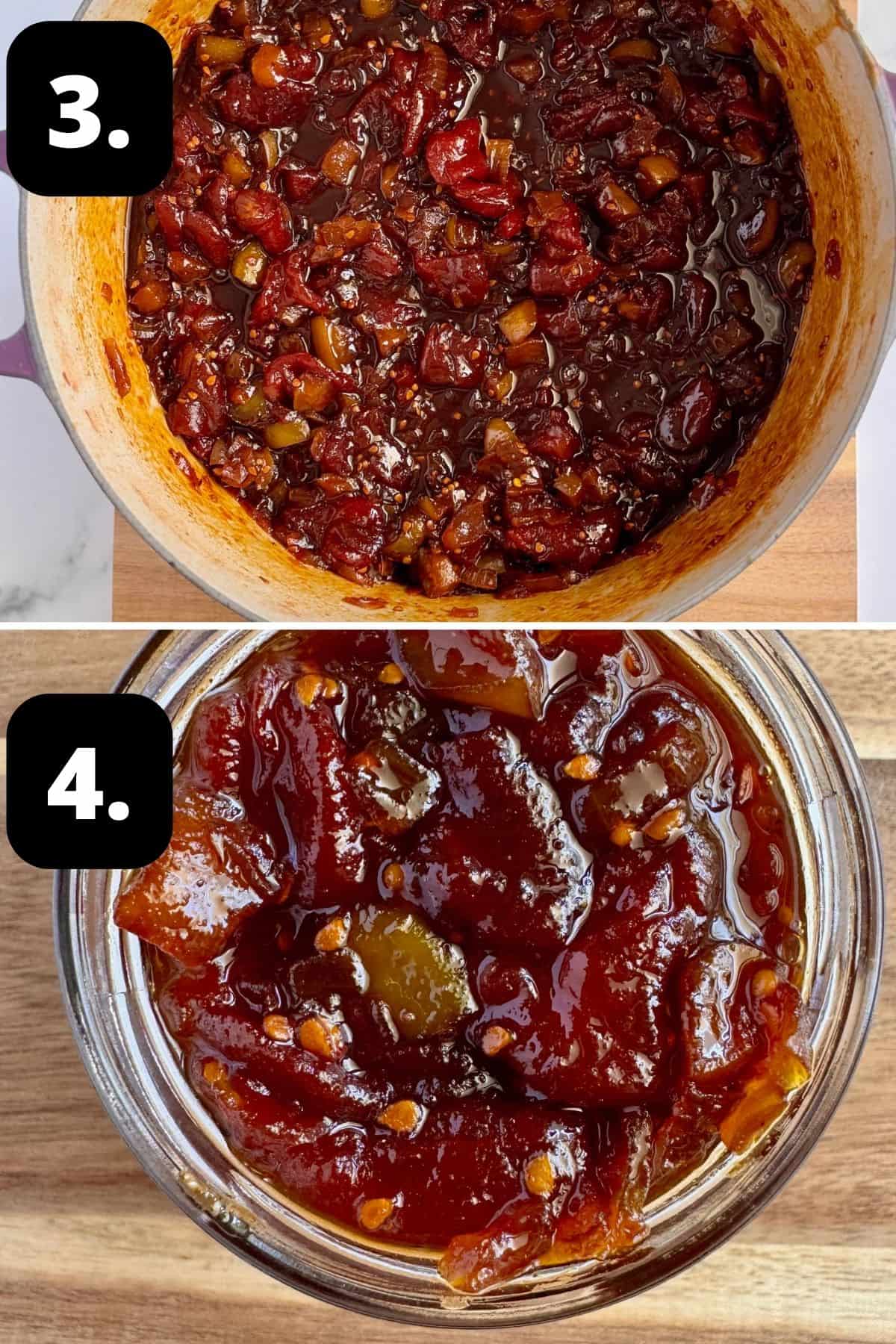
3 - Cook the chutney:
Once the sugar has dissolved and the mixture has been brought to the boil, it will take approximately 50-55 minutes to cook. During this time, stir well to avoid the chutney from sticking to the bottom of the pan.
4 - Add to your jars:
Once cooked and allowed to stand for 10 minutes, the mixture can be added to hot jars and sealed.
Hint: I recommend that you label the jars with the name and date you made it. Otherwise, it can be difficult to identify.
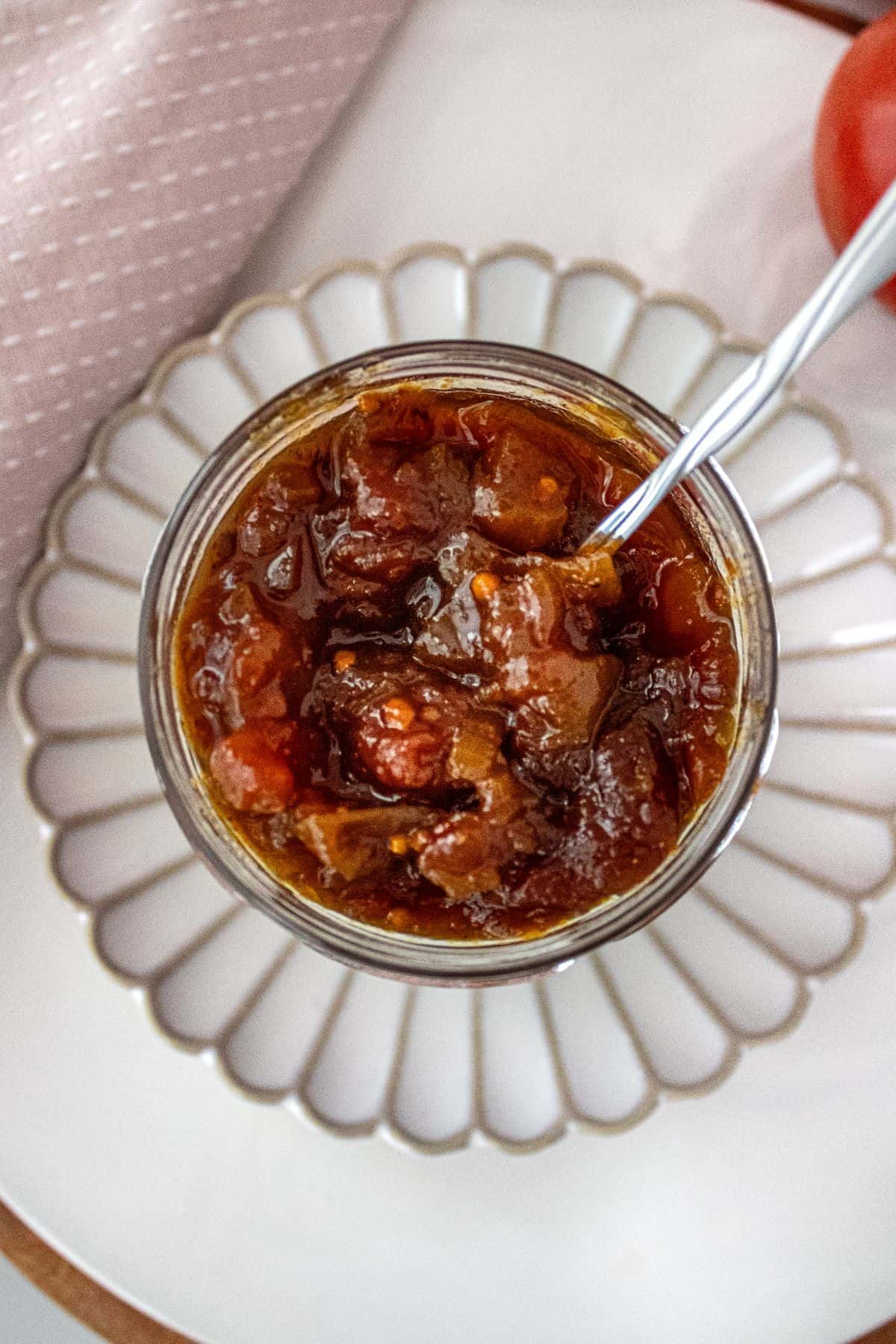
Tips for Success, Storage and FAQs:
For this recipe, I peeled the tomatoes. However, it is optional. It does take a little longer to peel them, but it gives the chutney a smoother texture.
If you follow the recipe instructions precisely and your jars are thoroughly sterilised, the Tomato Chutney should be shelf-stable for nine months.
If, like me, you find it difficult to wait, you can try the chutney shortly after you make it. However, for the best result, I recommend that you set the chutney aside for 1-2 weeks to allow the flavours to develop and the vinegar to mellow.
Store unopened jars of chutney in a cool, dark, dry location. Once a jar has been opened, store in the fridge.
Top Tip:
You will get the best result if you use tomatoes that are ripe and full of flavour.
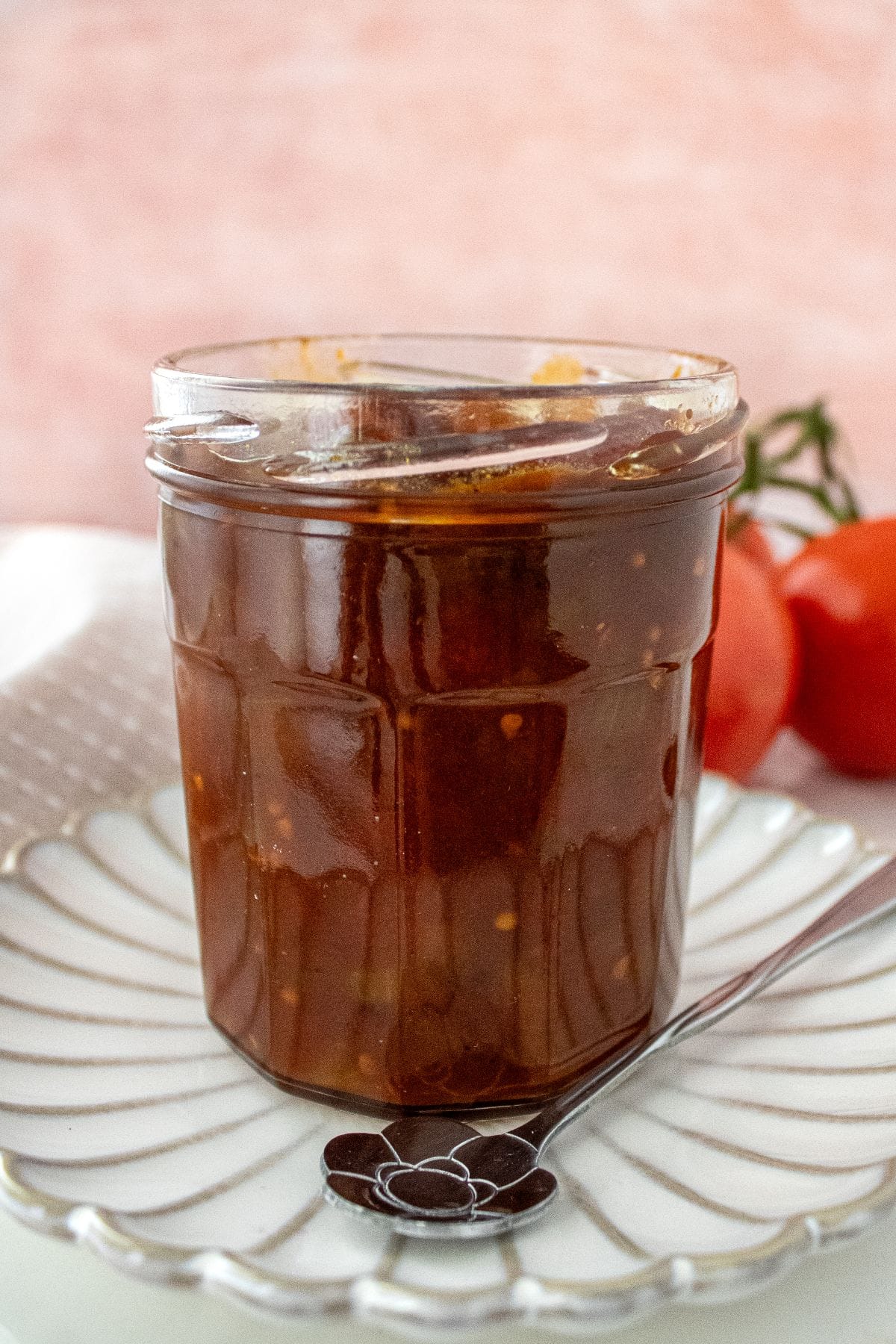
Serving Suggestions:
You will find that you will use the chutney in many ways. Some suggestions are:
- Enjoying it with cheese - especially a sharp cheddar.
- To add to sandwiches or burgers.
- Serve with meats - it works well with both hot or cold cuts.
- Add to the condiment selection at a barbecue.
- Spoon some over a block of cream cheese and serve with crackers; it is a great appetiser.
- Use as a glaze for a meatloaf.
- When making grilled cheese, I love to spread some under the cheese. So good!
- It is a popular homemade gift. Just tie a pretty ribbon around a jar.
If you do make this family favourite, I would love to hear how you enjoy it. I hope you will enjoy it as much as we do.
Alex xx
More Delicious Recipes For You To Try:
Stay in touch!
Follow me on Facebook, Pinterest, Flipboard and Instagram and subscribe to my newsletter.
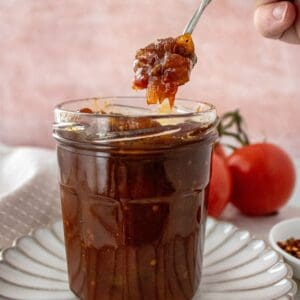
Tomato Chutney
Please note:
For accuracy, when weights are provided, we recommend weighing your ingredients. This will produce the best results. All oven temperatures listed are for fan forced.
Ingredients
- 1.5 kg (3.3 lb) tomatoes - prepared weight, once peeled and core removed (I started with 1.8 kg/4 lb) See Note 1
- 750 g (3 ¾ cups) light brown sugar
- 680 ml (2 ¾ cups) white vinegar - 5% acidity
- 3 medium brown/yellow onions - finely chopped
- 2 medium Granny Smith apple - unpeeled and cut into small cubes
- 3 teaspoon sea salt
- 1 teaspoon ground black pepper
- 1 teaspoon yellow mustard seeds
- 1 ½ teaspoon curry powder
- 1 ½ teaspoon ground turmeric
- ¼ teaspoon ground nutmeg
- ¼ teaspoon ground cloves
- ½ teaspoon red chilli pepper flakes
- 2 teaspoon ground ginger
Instructions
To Sterilise the Jars:
- Sterilise the jars you'll be using to store the chutney. Choose glass jars with an airtight, metal lid and ensure they have been washed by hand in hot soapy water then rinsed well. Check that the metal lids do not have rubber inserts - if they do, allow them to air dry, instead of placing in the oven.Preheat the oven to 130 Degrees C (270 F) and place the jars in the oven for 15-20 minutes. Keep the jars warm.
For the Tomato Chutney:
- Using a sharp knife, carefully score a cross into the bottom of each tomato. Add the tomatoes to a large pot of boiling water for 30-60 seconds, until the skin starts to peel. Remove and add to a bowl of ice water. Once they're cool enough to handle, peel the tomatoes and chop each tomato into approximately eight pieces - a large dice.
- Place all of the ingredients into a large, non-reactive saucepan or stockpot. See Note 2.Stir over medium-high heat until the sugar dissolves.
- Bring the chutney to boiling point then allow it to simmer for approximately 50-60 minutes.Stir occasionally until the mixture has reduced in volume, the surplus liquid has evaporated and the mixture thickens. The simmering time may vary as it will depend on the size of the pan and the amount of heat applied. As it thickens, you will need to be diligent with stirring and watch that it does not catch on the bottom of the pan. You can check that the chutney is ready by sliding a wooden spoon across the surface of the mixture. It is ready when the chutney does not immediately fill the gap. If the chutney is still too runny, cook it a further 5 minutes and test again.
- Be aware that as the liquid reduces, the mixture may bubble and spit and you need to take great care. I suggest that to be on the safe side, you wear a garment with long sleeves to protect yourself and use a long handled wooden spoon.
- After 50-60 minutes, or your chutney has thickened as per above, remove the saucepan from the heat and stand for 10 minutes.
- Remove your sterilised jars from the oven, and whilst they are still hot, fill with the chutney and seal the jars immediately.
- When the jars are cool enough to handle, remove any spills on the outside of the jars and label and date the chutney. Store it in a cool, dark, dry location. Set it aside for a minimum of one week, ideally two-four weeks. This will allow the flavours of the chutney to amalgamate and the vinegar to mellow.When removing chutney, always use a clean, dry spoon to avoid spoilage. Store open jars in the fridge.
Notes
- Tomatoes: for accuracy, we recommend weighing the tomatoes once you have peeled, trimmed and removed the cores. I started with 1.8 kg (4 lb) of tomatoes to get to the prepared weight of 1.5 kg (3.3 lb).
- Non-reactive saucepans: are those which are ceramic, stainless steel, glass or enamelled cookware. Copper, iron and aluminium pans are reactive. Acidic foods, such as vinegar or lemons, may take on a metallic taste and discolour if cooked in such pans.
- Maturing the chutney: a preserve made with vinegar needs time to mature. Set it aside for a minimum of one week, ideally two-four weeks. This will allow the flavours of the chutney to amalgamate and the vinegar to mellow.
- Storage: when the recipe is made according to instructions and the jars have been sterilised properly, the chutney will be shelf-stable for nine months when stored in a cool, dark place. A jar should be refrigerated after opening. Always use a clean spoon when removing chutney from the jar. This recipe has not been tested using a canning method. Please refer to the USDA Canning Guidelines for techniques, or follow a recipe designed for long-term canning.
- Nutritional information: is based on one whole jar. The nutritional information is an estimate only.
Nutrition Estimate:
Nutritional Disclaimer:
The nutritional information is an estimate only, and is derived from online calculators. For accurate results, we recommend calculating the nutritional information based on the ingredients and brands you use.






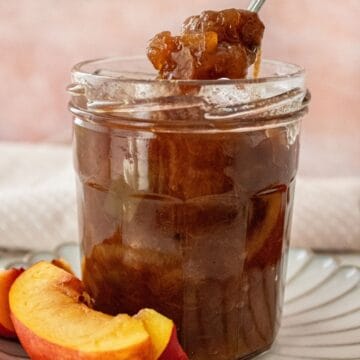
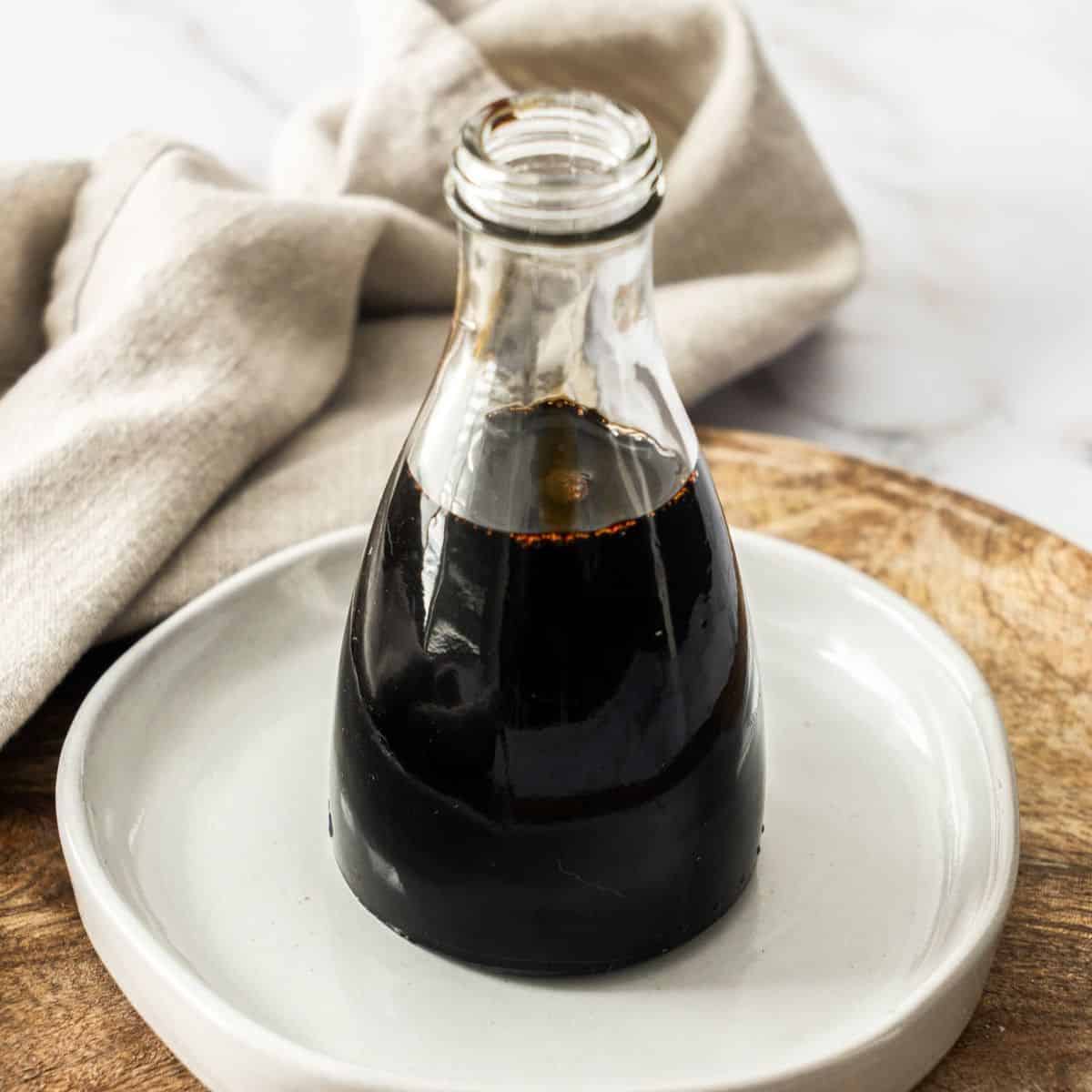
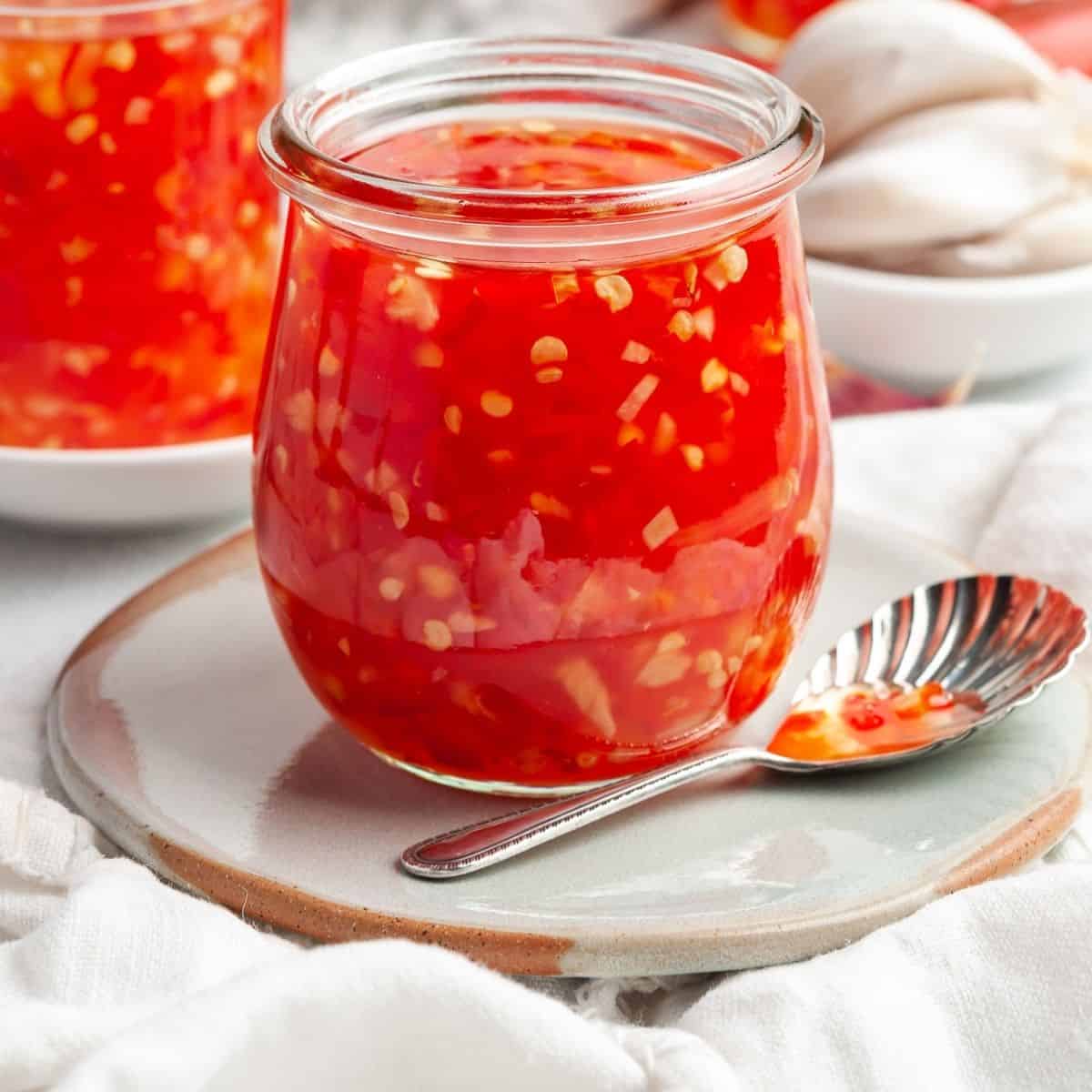
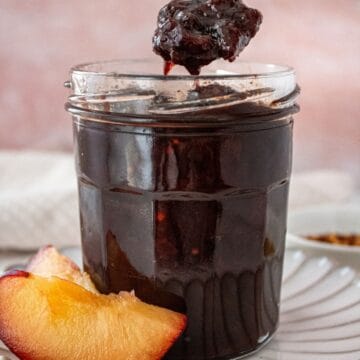
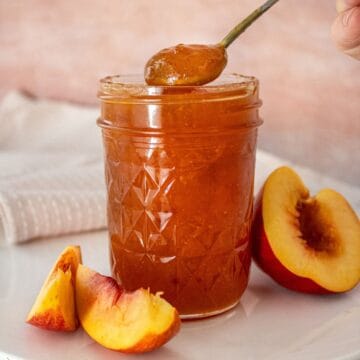
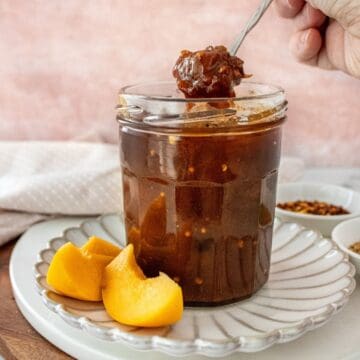

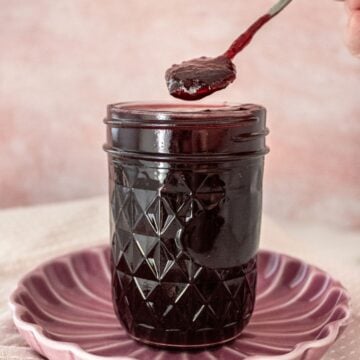
Leave a Comment